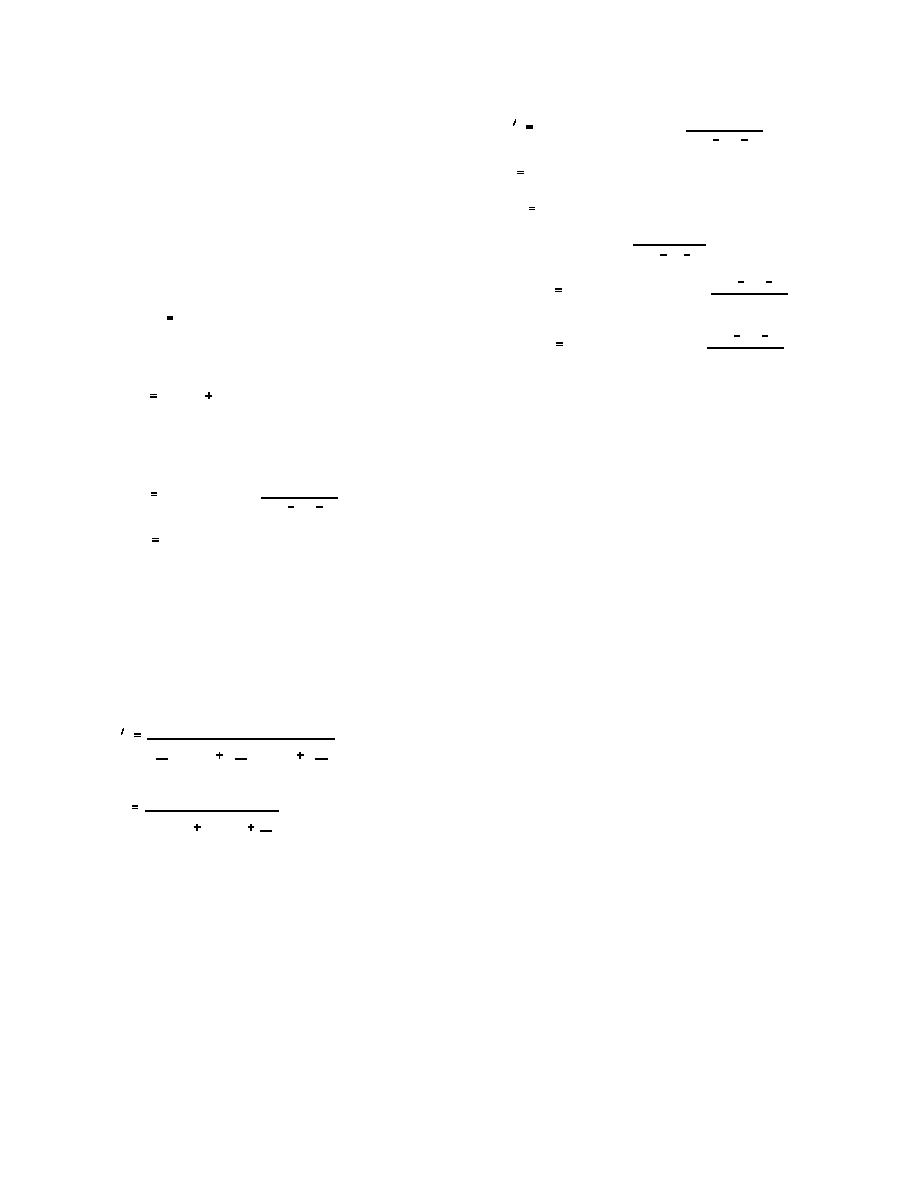
ETL 1110-2-365
31 Aug 94
the heat transfer that occurs between a fluid (e.g., air
Btu
h
revised film coefficient(
)
or water) and a concrete surface. The following
2 o
day in. F
equations are from the ASHRAE (American Society
of Heating, Refrigerating and Air Conditioning Engi-
b
thickness of formwork or insulation (in.)
neers) Handbook and Product Directory-1977 Funda-
mentals (1977). These equations may be used for
k
conductivity of formwork
computing the film coefficients to be included in
Btu
or insulation (
)
ABAQUS for modeling convection. For surfaces
day in. oF
without forms, the coefficients should be computed
based on the following:
day in.2 oF
Rformwork
R value of formwork (
)
Btu
0.1132V 0.8
h
(A-2)
day in.2 oF
for V > 10.9 mph
Rinsulation
R value of insulation(
)
Btu
and
h
0.0513(V)
0.165
(4) Foundation model. The foundation should be
(A-3)
for V < 10.9 mph
included in the heat transfer model to determine a
realistic temperature distribution within the structure.
The foundation should be no less than 10 ft in depth
where,
based on previous parametric studies (Truman,
Btu
Petruska, and Ferhi 1992). Prior to performing the
h
film coefficient(
)
2 o
day in. F
heat transfer analysis of the structure and foundation,
a heat transfer analysis should be performed on the
V
wind velocity(mph)
foundation for a time period of 1 year to determine
the temperature distribution in the foundation for the
The wind velocity may be selected based on monthly
start of concrete placement. The vertical size of
average wind velocities at the project site. Data can
elements in the foundation model should be deter-
be obtained from the National Climatic Data Center
mined using the equation A-1, but the horizontal size
for a given location and can be generalized over a
will be dictated by the size of the elements in the
period of several months for input into the analysis.
structure. The heat transfer analysis of the structure
If forms and insulation are in place, then the values
and foundation may include an interface element at
for h computed in the equations above should be
the foundation-concrete interface. If an interface
modified as follows:
element is used, a gap conductance of 200 Btu-
in./in.2-day-F should be specified.
1
h
b
b
1
( )formwork ( )insulation ( )
(5) Time increments. The maximum time incre-
k
k
h
ments to be used in the heat transfer analysis are
1
given in Table A-2. These same limits on increments
(A-4)
are used in the stress analysis. The small increments
1
Rformwork Rinsulation
( )
at the early times are necessary to capture the large
h
amounts of heat that are generated in very young
concrete. The time increments specified in Table A-2
where
are for days after a lift of concrete has been placed.
Exceeding the maximum time increments specified in
Table A-2 is permissible, provided a parametric study
is performed which demonstrates that results for both
A-19


 Previous Page
Previous Page
